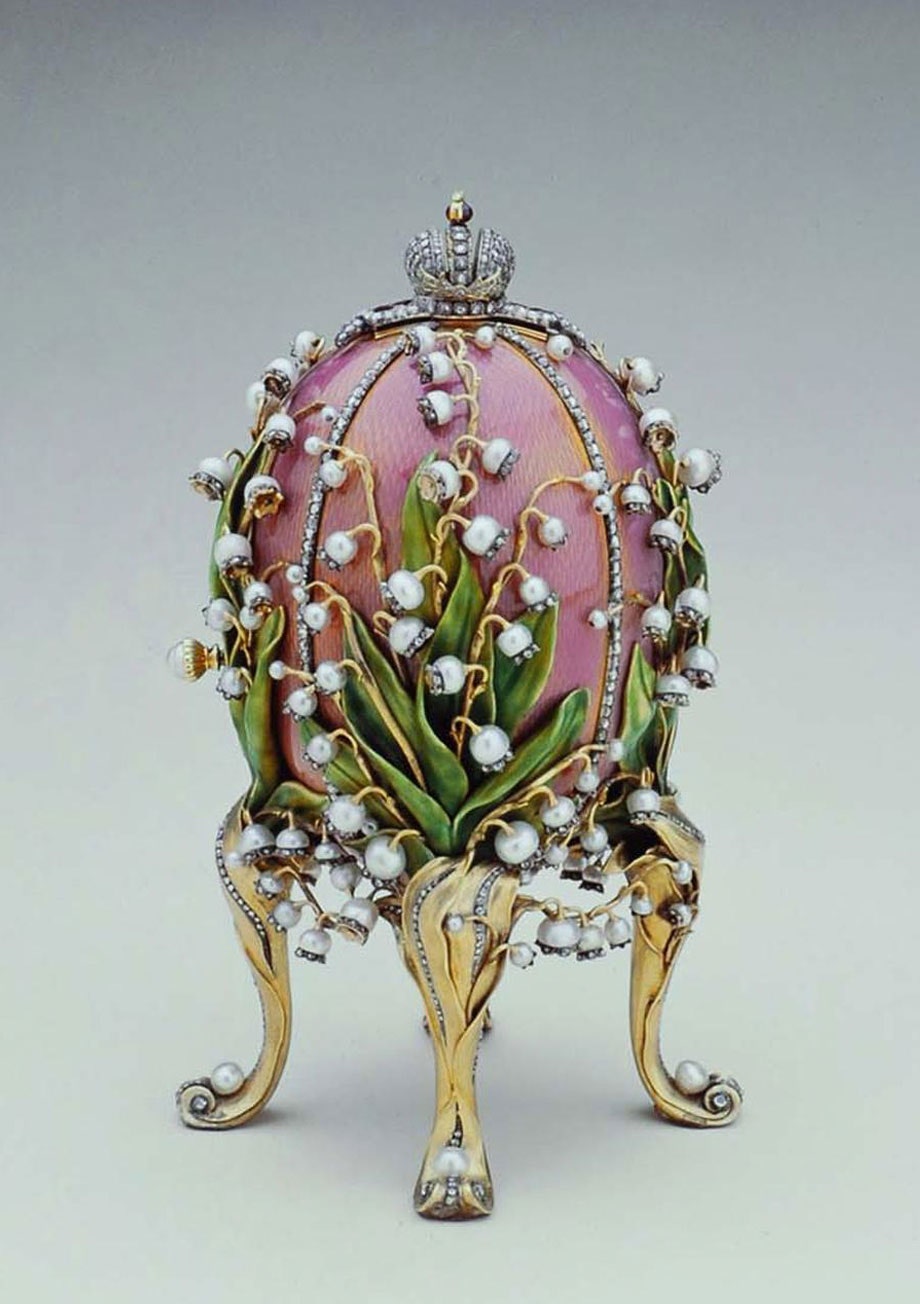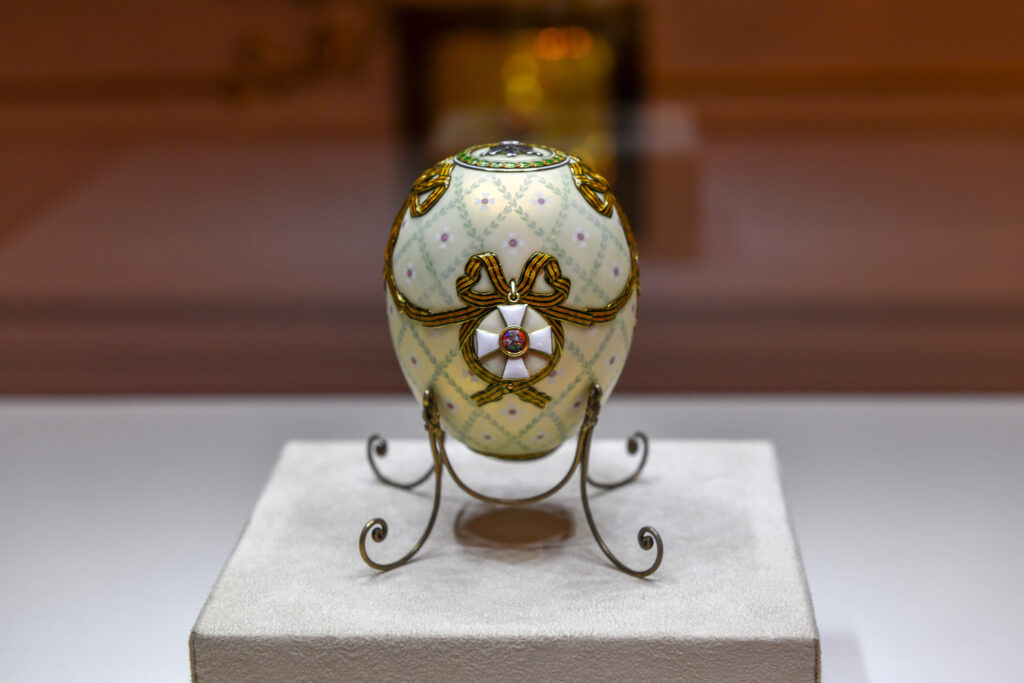Describe Faberge Eggs and Where They Originated.
The House of Faberge jewelry firm was founded in 1842 by Gustav Faberge. Today everyone knows about the famous Imperial Easter Eggs Collection created by The House of Fabergé for the Russian royal family.
Are Faberge Eggs From Russia Quora
New scholarship in the field of Fabergé eggs ensures that their appeal remains very much alive.

. We will also mention the Rothschild Egg. The best-knownas well as the most lavish and intricatewere the 50 Imperial eggs created for the Romanov family and given as Easter gifts. This tradition was begun in 1885 by Tsar Alexander III who commissioned Peter Carl Faberges workshop to create a special Easter egg for his wife Maria Fedorovna.
Youve probably heard of Fabergé eggsopulent egg-shaped ornaments decked with gemstones and precious metalsbut did you know about their history with Imperial Russia. The company is best known for creating jeweled Easter eggs between 1885 and 1917 several of which were given as gifts to Russian czars Nicholas II and Alexander III. The legacy of these eggs is far-reaching and a simple internet search will unearth hundreds of stories about them.
The most famous are those made for the Russian Tsars Alexander III and Nicholas II. This was during the tenure of Gustavs son Peter who was the member of the Faberge family who put the company. The House of Fabergé was founded as the jewellery company in 1842 by the father of Carl Fabergé Gustav.
The phrase Fabergé Egg has become synonymous with luxury and emblem of the wealth of. Faberge is one of the most iconic brands ever to come out of Russia and most known for its famous egg-shaped treasures. The most famous Faberge creations were the 50 Imperial Easter eggs designed and created for Tsars Alexander III and Nicholas II as gifts to be given to their mothers and wives.
The eggs celebrated every aspect of pre-Revolutionary Russian history and Imperial life from the Catherine the Great Egg to the Alexander Palace Egg but they also memorialised the love and passions of the last Romanovs. After the Russian Revolutionand the Romanovs deathsthe Fabergé family fled. Each egg reflected a national or familial current event during the 30 years that preceded the Bolshevik Revolution.
These springtime eggs were all the rage in the French court by the 16th century many of the eggs were decorated by the celebrated artists of the day. 50 Imperial Eggs were produced between 1885 and 1916 the first of which was commissioned by Tsar Alexander III as an Easter present for his wife Maria. This is a pattern type cookie set by Google Analytics where the pattern element on the name contains the unique identity number of the account or website it relates to.
The very first Imperial egg was the Hen Egg produced in 1885 by workmaster Erik Kollin. Created in the greatest of secrecy each Faberge egg was lovingly crafted for up to a year to ensure the perfect placement of every gem precious metal and secret within. Peter Carl Faberge a Russian jeweler of French descent crafted 50 Faberge eggs for the last family of the Romanov Dynasty.
They were Easter gifts for their wives and mothers and are called the Imperial Fabergé eggs. The data collected including the number visitors the source where they have come from and the pages visted in an anonymous form. Only 45 of them have been accounted for.
Apart from imperial eggs Fabergé jewellers produced Easter eggs for the nobility and rich people such as the families of the Yusupov Nobel Kelch. No other goldsmith or jeweler could match the lavish. Petersburg the 50 Imperial eggs made by Faberge over the course of three decades were left behind.
Peter Carl Fabergé a Russian artisan of Frencch Huguenot ancestry made about 50 gold and jeweled eggs when he was the royal jeweler to Russian aristocracy from 1885 forward. But in reality the heritage of Fabergé is much broader. These highly collectible objects were manufactured under the supervision of Peter Carl Fabergé between 1885 and 1917.
As a special gift produced for the most important holiday on the Russian Orthodox calendar this egg contained nested surprises. Fabergé Egg is a series of jewelry in the form of egg made by the company of Carl Faberge. Fabergé egg any of a series of decorative eggs containing objets dart that were made by Peter Carl Fabergés studios from 1885 to 1917.
As the Tsars family fled St. The House of Fabergé made about 52 imperial eggs of which 46 have survived. The series was created between 1885 and 1916 for the Russian imperial family and private buyers.
Emanating from Imperial Russia the eponymous series of Easter eggs were created by goldsmith and jeweller Peter Carl Fabergé for the Russian royal family. According to Fabergé Proler Skurlov in Fabergé Imperial Easter Eggs London 1997 the egg was designed by Gustav Shkilter a relative of Carl Fabergés and made by the Putilovskii steel plant which was renowned for its high-quality steel. An original invoice from.
Some of them you will see in the Fabergé Museum. The egg is said to have been based on the design of a famed 18th-century orange tree mechanical which is why the piece was for years mislabeled the Orange Tree Egg. In total 71 copies are known to be created of which 54 are imperial.
The Bolsheviks grabbed many of the eggs. Many Fabergé Eggs were confiscated after the Russian Revolution. The egg was a gift from Tsar Alexander III to his wife Maria Fedorovna.
Fabergé Eggs This tradition reached new heights in the court of the Czar of Russia that saw the court jeweler Carl Fabergé making these pieces of art made out of gold porcelain and crystal. A Fabergé egg is one of the jewelled eggs made by Peter Carl Fabergé and his company between 1885 and 1917. Some went missing -- today only 43 are believed to exist from the.

Treasures Of The World Faberge Introduction Frame

Faberge The World S Most Hunted Easter Eggs Biltmore Loan Jewelry


0 Response to "Describe Faberge Eggs and Where They Originated."
Post a Comment